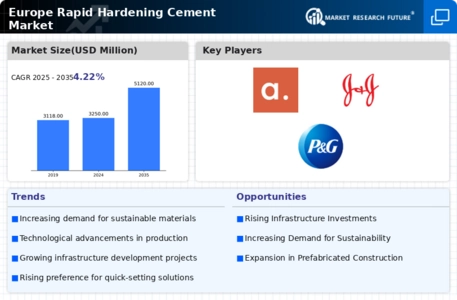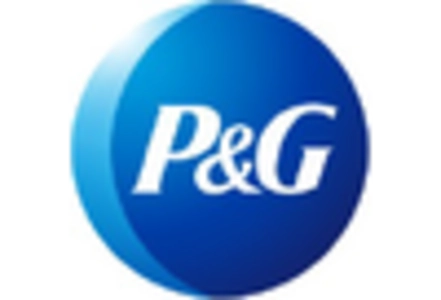-
EXECUTIVE SUMMARY
-
MARKET INTRODUCTION
-
Definition
-
Scope of the Study
- Research
-
Objective
-
Assumptions
-
Limitations
-
RESEARCH METHODOLOGY
-
Overview
-
Data Mining
-
Secondary Research
-
Primary Research
-
Primary Interviews and Information Gathering Process
-
Breakdown of Primary Respondents
-
Forecasting Model
-
Market Size Estimation
- Bottom-Up Approach
- Top-Down Approach
-
Data Triangulation
-
Validation
-
MARKET DYNAMICS
-
Overview
-
Drivers
-
Restraints
-
Opportunities
-
MARKET FACTOR ANALYSIS
-
Value Chain Analysis
-
Porter’s Five
- Bargaining Power of Buyers
- Threat of New Entrants
- Threat of Substitutes
- Intensity of Rivalry
-
Forces Analysis
-
Bargaining Power of Suppliers
-
COVID-19 Impact Analysis
- Market Impact Analysis
- Regional Impact
- Opportunity and
-
Threat Analysis
-
EUROPE RAPID HARDENING CEMENT MARKET, BY TYPE
-
Overview
-
Rapid Hardening Cement
-
Low Heat Cement
-
Sulfate Resisting Cement
-
White Cement
-
Waterproof Cement
-
High Alumina Cement
-
Others
-
EUROPE RAPID HARDENING CEMENT MARKET, BY PROCESS
-
Overview
-
Wet Spraying
-
Dry Spraying
-
EUROPE RAPID HARDENING
-
CEMENT MARKET, BY APPLICATIONS
-
Overview
-
Underground Constructions
-
Water Retaining Structures
-
Protective Coatings
-
Repair Work
-
EUROPE RAPID HARDENING
-
CEMENT MARKET, BY REGION
-
Overview
-
Europe
- Germany
- France
- UK
-
Italy
-
Spain
-
Sweden
-
Denmark
-
Luxembourg
-
Norway
-
Austria
-
Rest of Europe
-
COMPETITIVE LANDSCAPE
-
Overview
-
Competitive Analysis
-
Market Share Analysis
-
Major Growth Strategy in the Europe Rapid Hardening Cement Market,
-
Competitive Benchmarking
-
Leading Players
-
in Terms of Number of Developments in the Europe Rapid Hardening Cement Market,
-
Key developments
- Merger & Acquisitions
- Joint Ventures
-
and Growth Strategies
-
New Product Launch/Service Deployment
-
Major Players Financial Matrix
- Sales & Operating
-
Income, 2022
-
Major Players R&D Expenditure. 2022
-
COMPANY PROFILES
-
CEMEX S.A.B. de C.V. (Mexico)
- Company Overview
- Financial Overview
- Products Offered
- Key Developments
- SWOT Analysis
- Key Strategies
-
LAFARGEHOLCIM LTD.
- Company Overview
- Financial Overview
- Products Offered
- Key Developments
- SWOT Analysis
- Key Strategies
-
(SWITZERLAND)
-
Company Overview
-
Financial Overview
-
Products Offered
-
Key Developments
-
SWOT Analysis
-
Key Strategies
-
TARMAC BUILDING PRODUCTS LIMITED (U.K)
-
NATURAL CEMENT DISTRIBUTION LTD (U.K)
- Company Overview
- Financial Overview
- Products Offered
- Key Developments
- SWOT Analysis
- Key Strategies
-
Lkab Berg &Betong
- Company Overview
- Financial Overview
- Products Offered
- Key Developments
- SWOT Analysis
- Key Strategies
-
AB (Sweden)
-
Company Overview
-
Financial Overview
-
Products Offered
-
Key Developments
-
SWOT Analysis
-
Key Strategies
-
KPM Industries (Canada)
-
HEIDELBERGCEMENT AG (Germany)
- Company Overview
- Financial Overview
- Products Offered
- Key Developments
- SWOT Analysis
- Key Strategies
-
BASF (GERMANY)
- Company Overview
- Financial Overview
- Products Offered
- Key Developments
- SWOT Analysis
- Key Strategies
-
A & A READY
- Company Overview
- Financial Overview
- Products Offered
- Key Developments
- SWOT Analysis
- Key Strategies
-
MIXED CONCRETE INC.(U.S.)
-
GCP Applied Technologies (U.K)
- Company Overview
- Financial Overview
- Products Offered
- Key Developments
- SWOT Analysis
- Key Strategies
-
APPENDIX
-
References
-
Related Reports
-
-
LIST OF TABLES
-
EUROPE RAPID HARDENING
-
CEMENT MARKET, SYNOPSIS, 2018-2032
-
EUROPE RAPID HARDENING CEMENT MARKET, ESTIMATES
-
& FORECAST, 2018-2032 (USD BILLION)
-
EUROPE RAPID HARDENING CEMENT MARKET, BY TYPE, 2018-2032
-
(USD BILLION)
-
TABLE
-
EUROPE RAPID HARDENING CEMENT MARKET, BY PROCESS, 2018-2032 (USD BILLION)
-
EUROPE RAPID
-
HARDENING CEMENT MARKET, BY APPLICATIONS, 2018-2032 (USD BILLION)
-
GERMANY: RAPID HARDENING
-
CEMENT MARKET, BY TYPE, 2018-2032 (USD BILLION)
-
GERMANY: RAPID HARDENING CEMENT MARKET, BY
-
PROCESS, 2018-2032 (USD BILLION)
-
GERMANY: RAPID HARDENING CEMENT MARKET, BY APPLICATIONS, 2018-2032
-
(USD BILLION)
-
TABLE
-
FRANCE: RAPID HARDENING CEMENT MARKET, BY TYPE, 2018-2032 (USD BILLION)
-
FRANCE: RAPID
-
HARDENING CEMENT MARKET, BY PROCESS, 2018-2032 (USD BILLION)
-
FRANCE: RAPID HARDENING CEMENT MARKET, BY
-
APPLICATIONS, 2018-2032 (USD BILLION)
-
ITALY: RAPID HARDENING CEMENT MARKET, BY TYPE, 2018-2032
-
(USD BILLION)
-
TABLE
-
ITALY: RAPID HARDENING CEMENT MARKET, BY PROCESS, 2018-2032 (USD BILLION)
-
ITALY: RAPID
-
HARDENING CEMENT MARKET, BY APPLICATIONS, 2018-2032 (USD BILLION)
-
SPAIN: RAPID HARDENING
-
CEMENT MARKET, BY TYPE, 2018-2032 (USD BILLION)
-
SPAIN: RAPID HARDENING CEMENT MARKET, BY
-
PROCESS, 2018-2032 (USD BILLION)
-
SPAIN: RAPID HARDENING CEMENT MARKET, BY APPLICATIONS, 2018-2032
-
(USD BILLION)
-
TABLE
-
UK: RAPID HARDENING CEMENT MARKET, BY TYPE, 2018-2032 (USD BILLION)
-
UK: RAPID HARDENING
-
CEMENT MARKET, BY PROCESS, 2018-2032 (USD BILLION)
-
UK: RAPID HARDENING CEMENT MARKET, BY APPLICATIONS,
-
SWEDEN: RAPID HARDENING CEMENT MARKET, BY TYPE, 2018-2032
-
(USD BILLION)
-
TABLE
-
SWEDEN: RAPID HARDENING CEMENT MARKET, BY PROCESS, 2018-2032 (USD BILLION)
-
SWEDEN: RAPID
-
HARDENING CEMENT MARKET, BY APPLICATIONS, 2018-2032 (USD BILLION)
-
DENMARK: RAPID HARDENING
-
CEMENT MARKET, BY TYPE, 2018-2032 (USD BILLION)
-
DENMARK: RAPID HARDENING CEMENT MARKET,
-
BY PROCESS, 2018-2032 (USD BILLION)
-
DENMARK: RAPID HARDENING CEMENT MARKET, BY APPLICATIONS,
-
LUXEMBOURG: RAPID HARDENING CEMENT MARKET, BY TYPE, 2018-2032
-
(USD BILLION)
-
TABLE
-
LUXEMBOURG: RAPID HARDENING CEMENT MARKET, BY PROCESS, 2018-2032 (USD BILLION)
-
LUXEMBOURG:
-
RAPID HARDENING CEMENT MARKET, BY APPLICATIONS, 2018-2032 (USD BILLION)
-
NORWAY: RAPID
-
HARDENING CEMENT MARKET, BY TYPE, 2018-2032 (USD BILLION)
-
NORWAY: RAPID HARDENING CEMENT MARKET, BY
-
PROCESS, 2018-2032 (USD BILLION)
-
NORWAY: RAPID HARDENING CEMENT MARKET, BY APPLICATIONS, 2018-2032
-
(USD BILLION)
-
TABLE
-
AUSTRIA: RAPID HARDENING CEMENT MARKET, BY TYPE, 2018-2032 (USD BILLION)
-
AUSTRIA: RAPID
-
HARDENING CEMENT MARKET, BY PROCESS, 2018-2032 (USD BILLION)
-
AUSTRIA: RAPID HARDENING CEMENT MARKET,
-
BY APPLICATIONS, 2018-2032 (USD BILLION)
-
REST OF EUROPE: RAPID HARDENING CEMENT MARKET,
-
BY TYPE, 2018-2032 (USD BILLION)
-
REST OF EUROPE: RAPID HARDENING CEMENT MARKET, BY PROCESS,
-
REST OF EUROPE: RAPID HARDENING CEMENT MARKET, BY APPLICATIONS,
-
LIST OF FIGURES
-
RESEARCH PROCESS
-
MARKET STRUCTURE FOR THE EUROPE RAPID HARDENING
-
CEMENT MARKET
-
FIGURE
-
MARKET DYNAMICS FOR THE EUROPE RAPID HARDENING CEMENT MARKET
-
EUROPE RAPID HARDENING
-
CEMENT MARKET, SHARE (%), BY TYPE, 2021
-
EUROPE RAPID HARDENING CEMENT MARKET, SHARE (%),
-
BY PROCESS, 2021
-
FIGURE
-
EUROPE RAPID HARDENING CEMENT MARKET, SHARE (%), BY APPLICATIONS, 2021
-
EUROPE RAPID
-
HARDENING CEMENT MARKET, SHARE (%), BY REGION, 2021
-
EUROPE RAPID HARDENING CEMENT MARKET: COMPANY
-
SHARE ANALYSIS, 2021 (%)
-
CEMEX S.A.B. DE C.V. (MEXICO): FINANCIAL OVERVIEW SNAPSHOT
-
CEMEX S.A.B.
-
DE C.V. (MEXICO): SWOT ANALYSIS
-
LAFARGEHOLCIM LTD. (SWITZERLAND): FINANCIAL OVERVIEW SNAPSHOT
-
LAFARGEHOLCIM
-
LTD. (SWITZERLAND): SWOT ANALYSIS
-
TARMAC BUILDING PRODUCTS LIMITED (U.K): FINANCIAL OVERVIEW
-
SNAPSHOT
-
FIGURE
-
TARMAC BUILDING PRODUCTS LIMITED (U.K): SWOT ANALYSIS
-
NATURAL CEMENT DISTRIBUTION LTD (U.K):
-
FINANCIAL OVERVIEW SNAPSHOT
-
NATURAL CEMENT DISTRIBUTION LTD (U.K): SWOT ANALYSIS
-
LKAB BERG &BETONG
-
AB (SWEDEN): FINANCIAL OVERVIEW SNAPSHOT
-
LKAB BERG &BETONG AB (SWEDEN): SWOT ANALYSIS
-
FIGURE 19
-
KPM INDUSTRIES (CANADA): FINANCIAL OVERVIEW SNAPSHOT
-
KPM INDUSTRIES (CANADA): SWOT ANALYSIS
-
FIGURE 21
-
HEIDELBERGCEMENT AG (GERMANY): FINANCIAL OVERVIEW SNAPSHOT
-
HEIDELBERGCEMENT AG (GERMANY): SWOT ANALYSIS
-
BASF (GERMANY):
-
FINANCIAL OVERVIEW SNAPSHOT
-
BASF (GERMANY): SWOT ANALYSIS
-
A & A READY MIXED CONCRETE INC.(U.S.):
-
FINANCIAL OVERVIEW SNAPSHOT
-
A & A READY MIXED CONCRETE INC.(U.S.): SWOT ANALYSIS
-
GCP APPLIED
-
TECHNOLOGIES (U.K): FINANCIAL OVERVIEW SNAPSHOT
-
GCP APPLIED TECHNOLOGIES (U.K): SWOT ANALYSIS















Leave a Comment